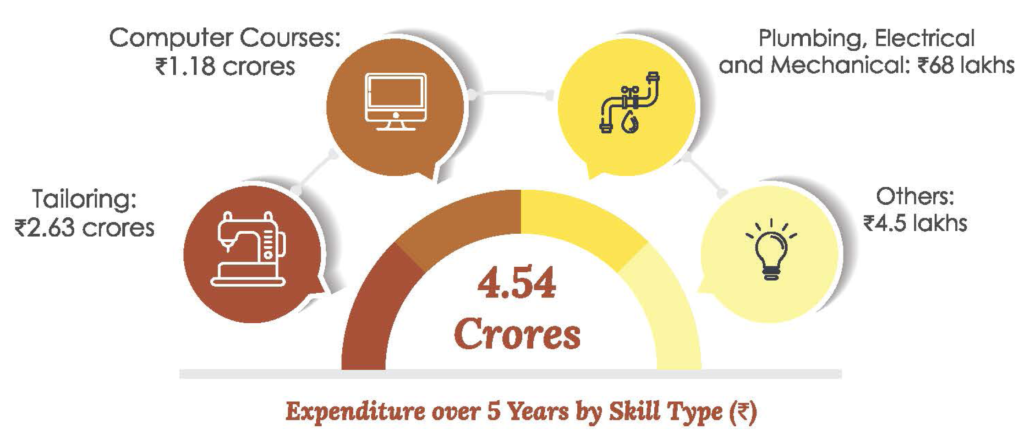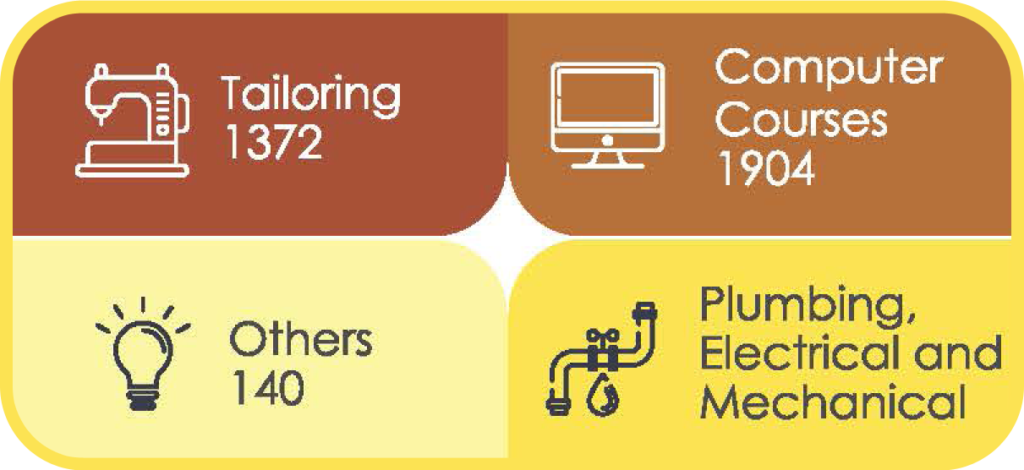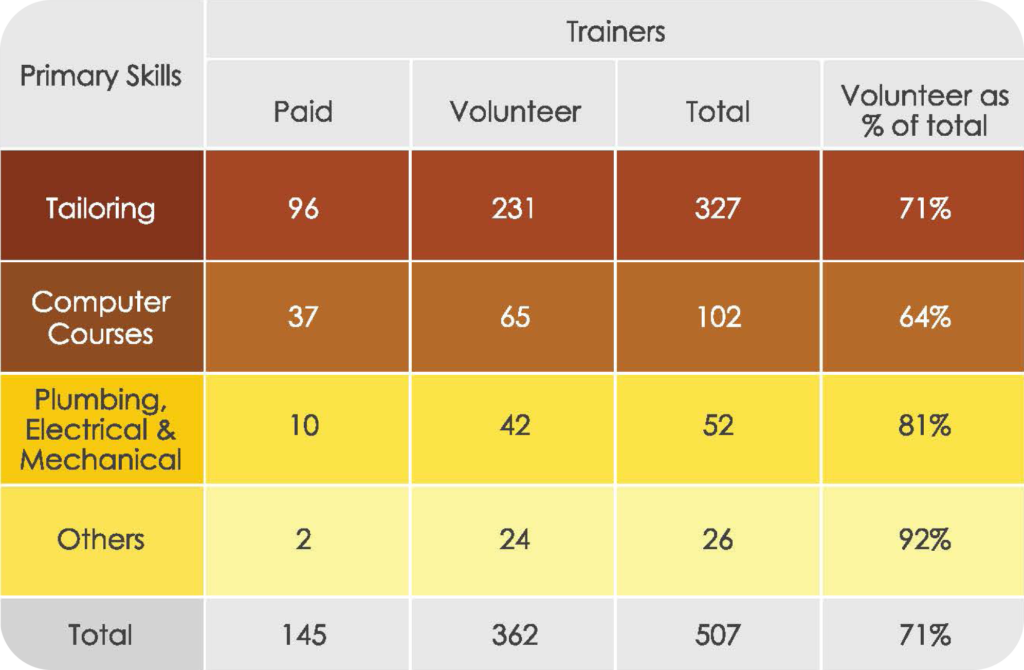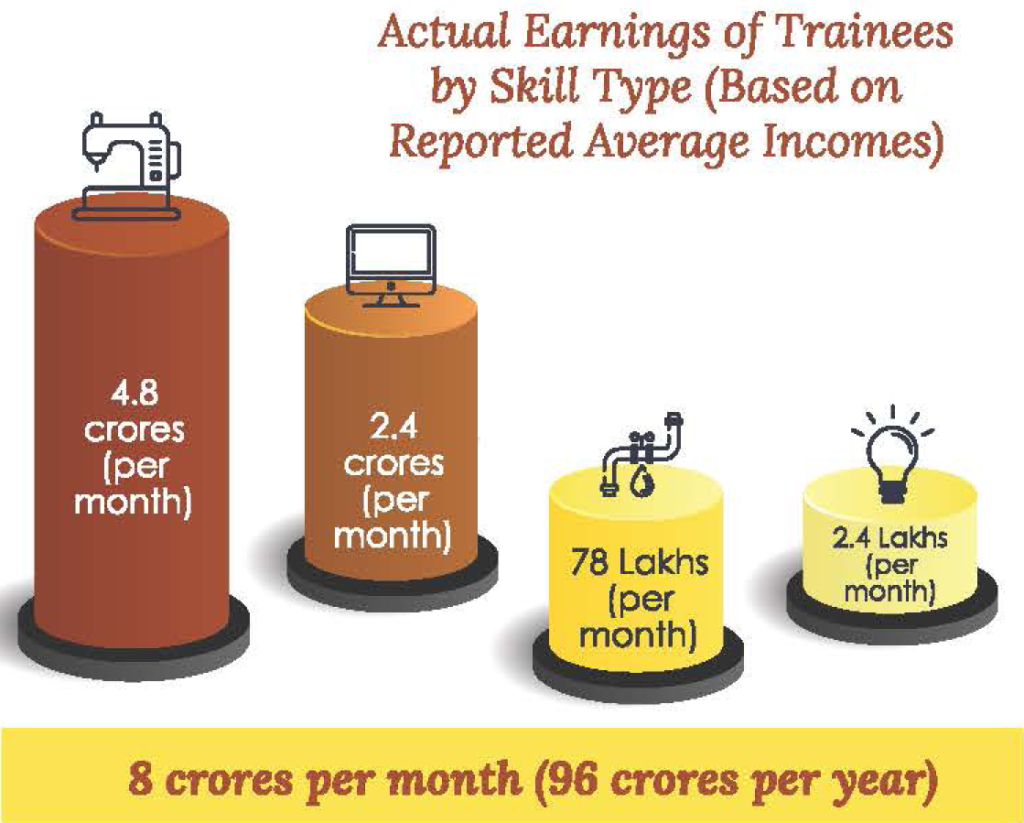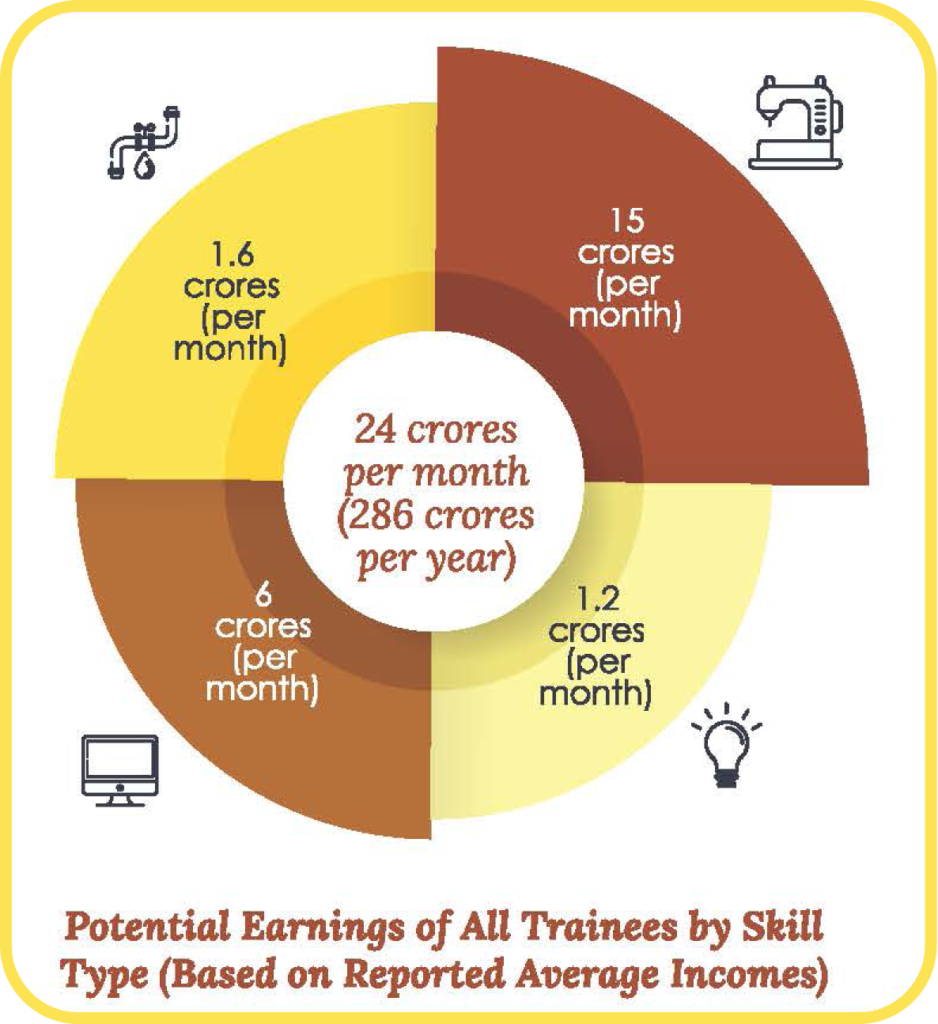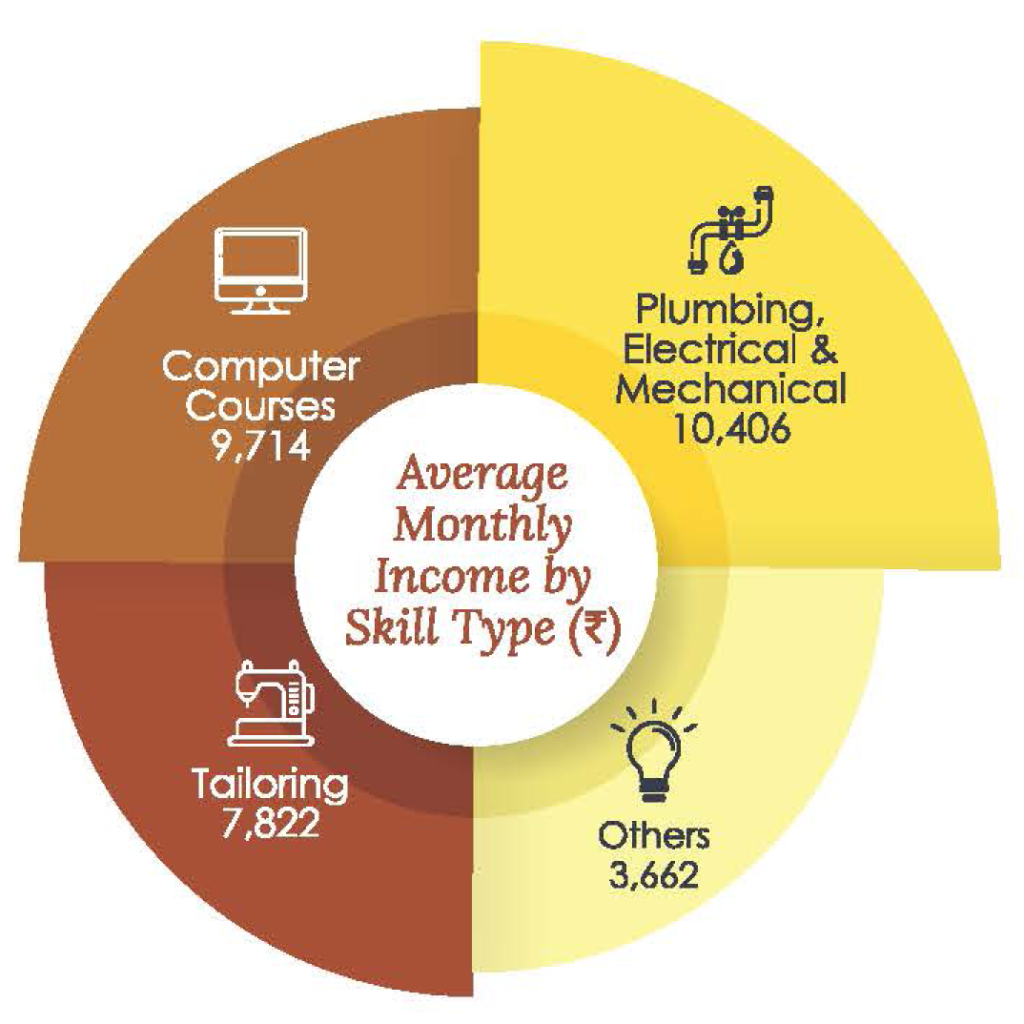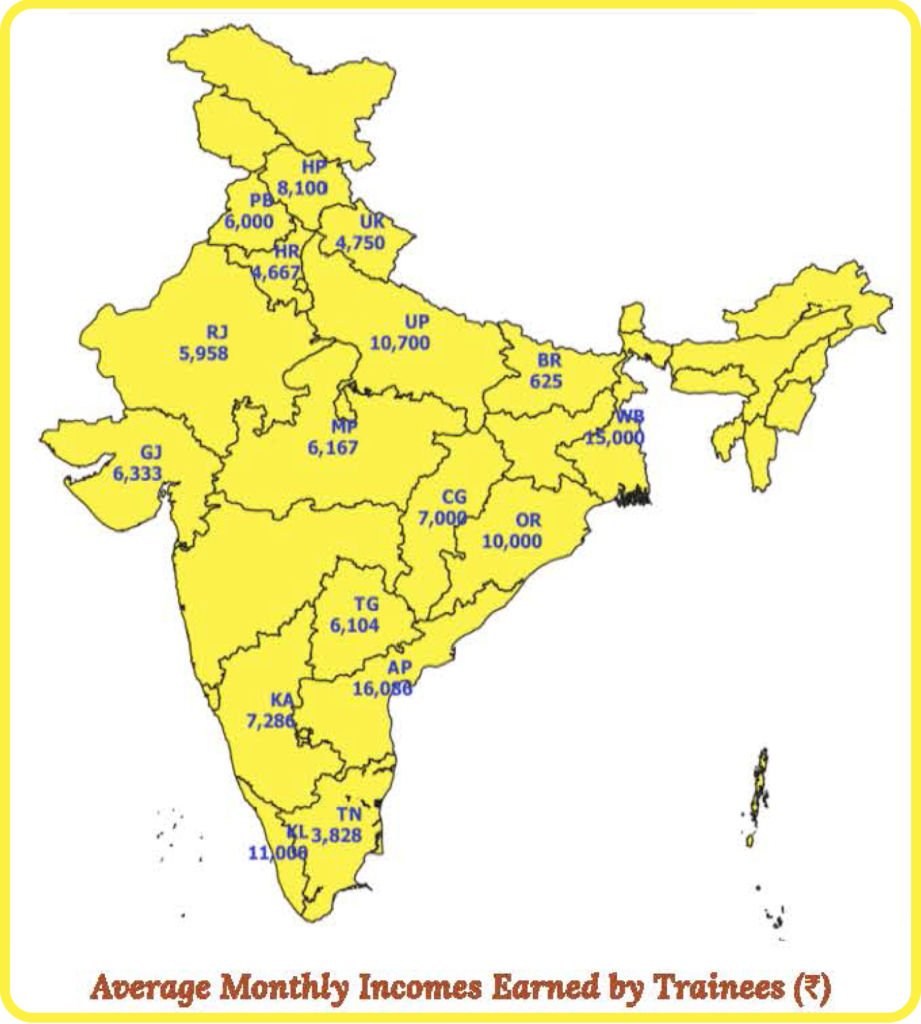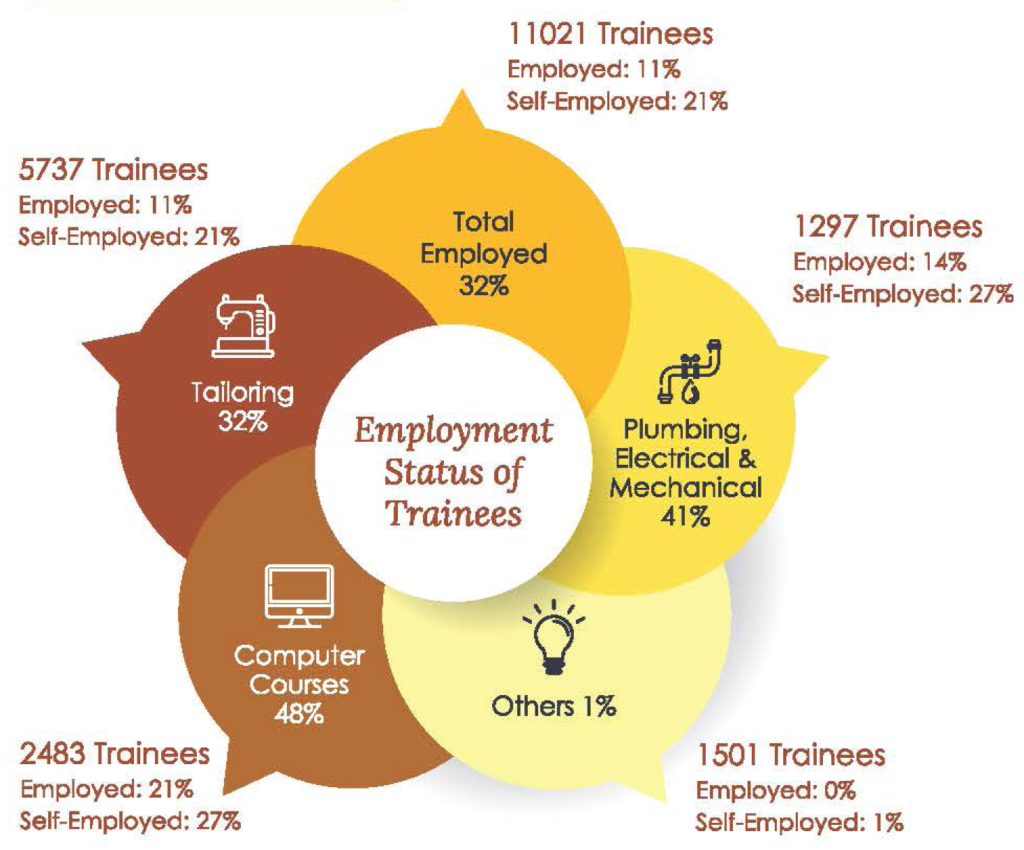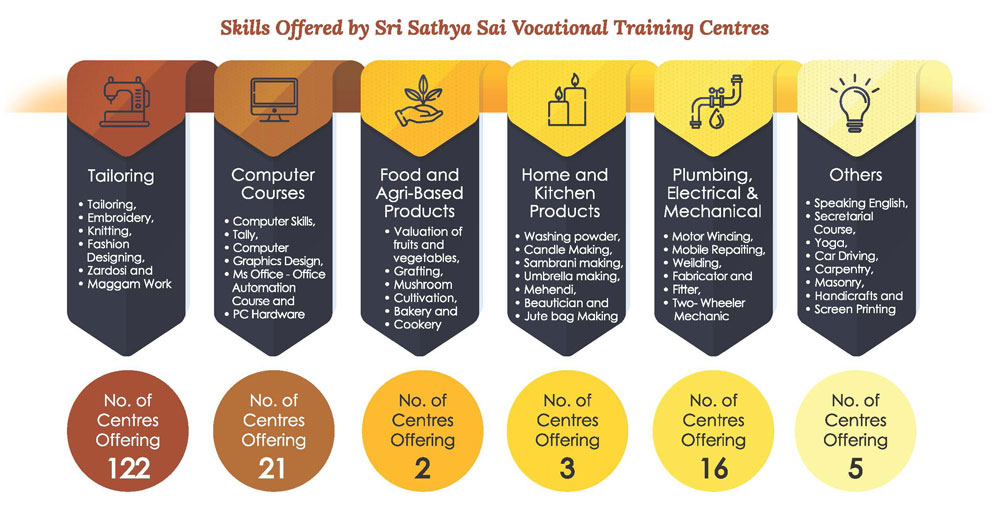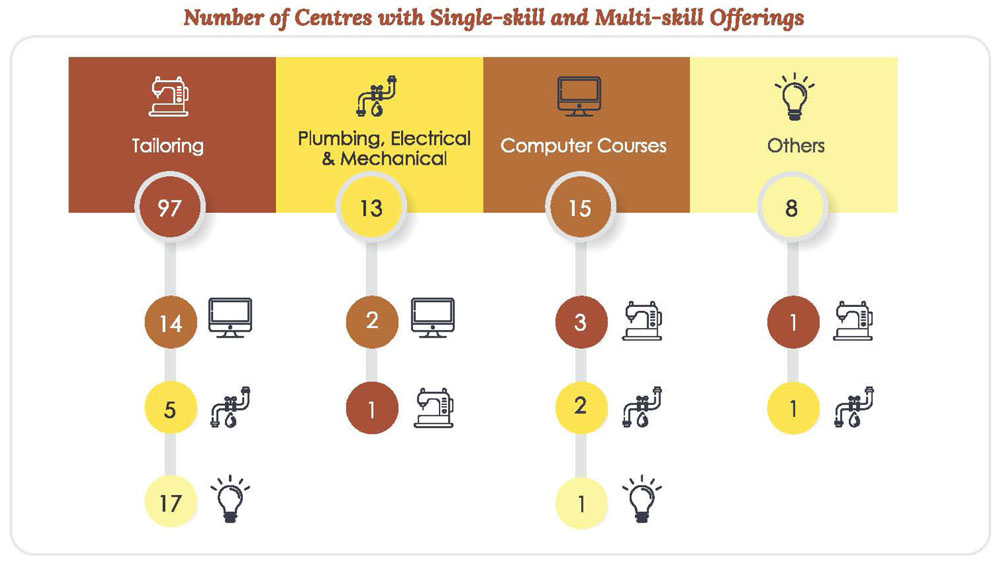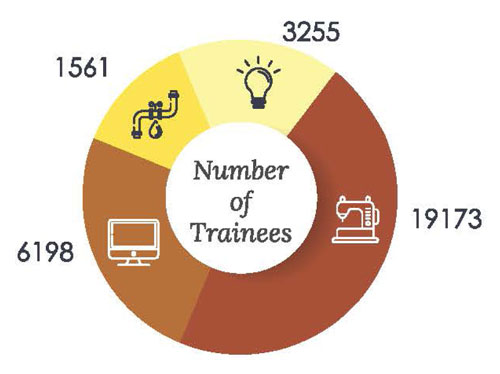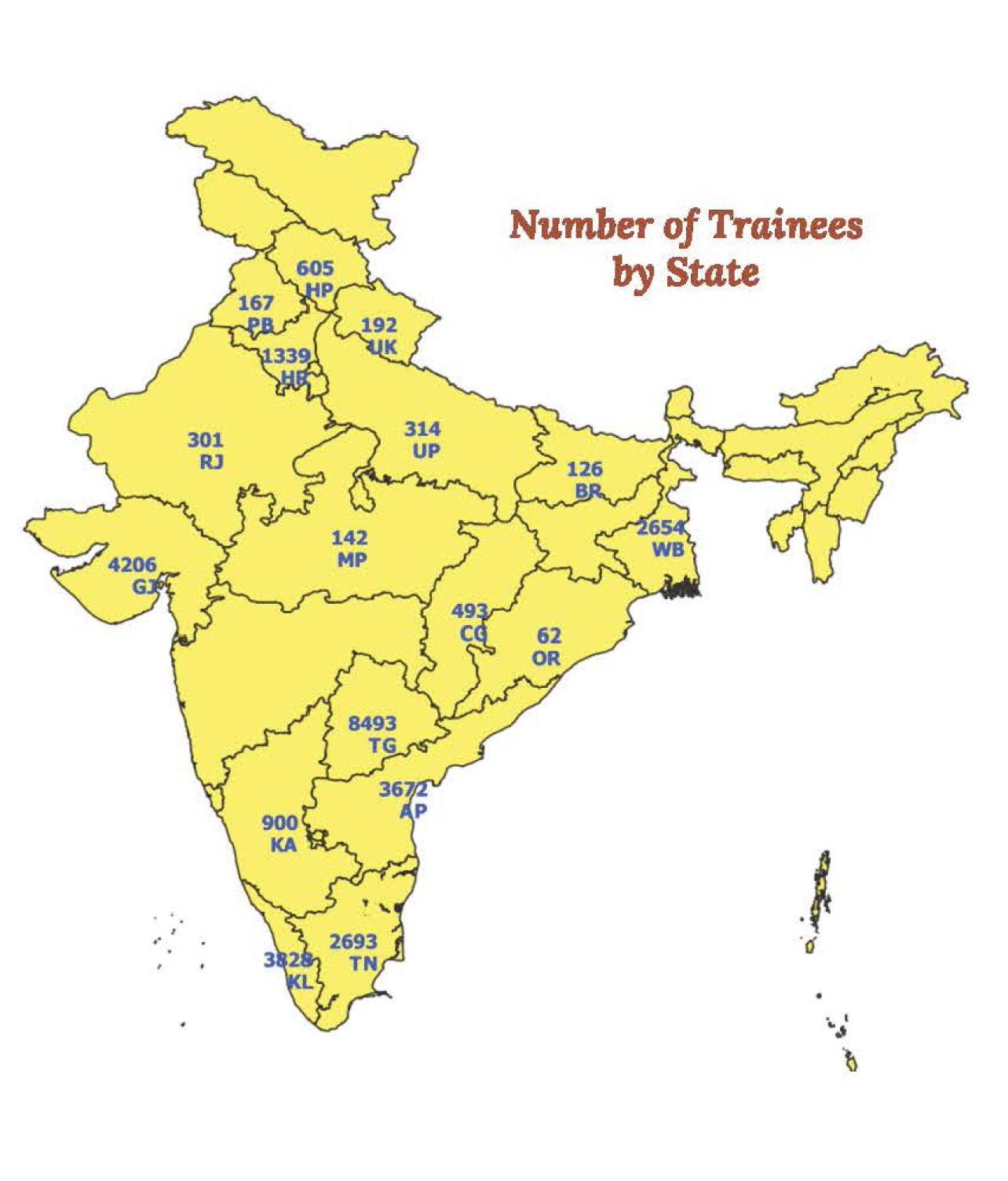December 27, 2021
Cost Benefit
For an investment of ₹4.54 Crores, the Sri Sathya Sai Vocational Training Centres have been
able to train 30,000+ youth who, based on the average income data generated in this
study, now have the potential to generate ₹286 crores per year. This is an impressive
achievement on multiple counts:
- The financial inputs to achieve such a figure are reasonably modest due to the organisation’s emphasis on volunteering by highly accomplished and skilled personnel.
- Sa mitis absorb a chunk of other costs like rent and other expenses.
- The student does not pay anything to be trained and therefore has zero monetary constraints to access the training.
- The cost per trainee is extremely modest when compared to other national programmes.
- The youth being benefited are from both urban and rural areas (where, especially, earning a steady income outside of agriculture is a difficult task);
- The intangible gains for the trainees are substantial: Samiti members take personal interest in mentoring the trainees, spending time with the youth and sharing their knowledge.
- Finally, and more importantly, the trainees are able to eam an income and support their families, which can be a game changer for them and their families, allowing them to stay in their homes if they wish to, instead of migrating to cities in search of jobs.
The benefits of the Sri Sathya Sai Vocational Training Programmes therefore are
economic and social, psychological and spiritual. Profiles of a few trainee
graduates give us a glimpse of such benefits.







































